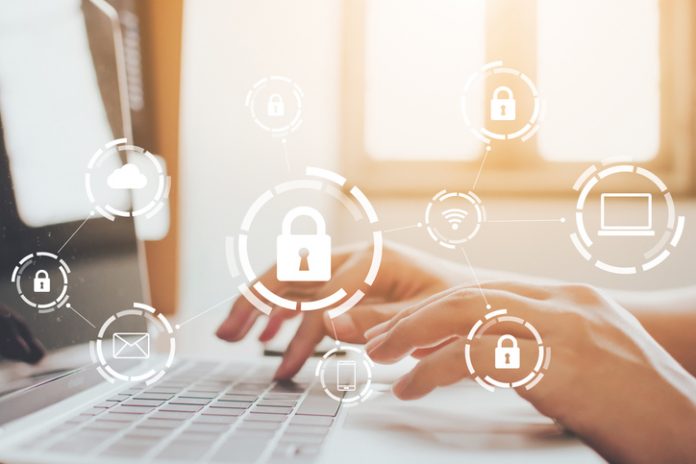Cybercrime is a growing hazard in today’s virtual world.
Globally, cyber attacks cost $6 trillion in 2021 – a number that’s expected to rise to $10.5 trillion by 2025.
Every 11 seconds, a business is falling victim to a ransomware attack. That’s 57 times higher than back in 2015. In 2020 alone, the amount of ransom paid to cyber criminals to regain access to personal data increased 311%.
Consumers are just as affected by cyber attacks as businesses. A recent study by Aura published in an article How to Know If Your Identity Was Stolen found that 47% of Americans have experienced identity theft last year. In most cases, several thousand dollars’ worth of damage is done.
But how can consumers and businesses protect themselves? What are the best measures to successfully fend off cyber attacks? Here are ten cyber security tips you need to follow.
1. Choose Secure Passwords
Basic as it may sound, start by choosing secure passwords for all your accounts.
Weak passwords were still to blame for 30% of ransomware attacks in 2019.
And even now, as 2021 draws to a close, the three most common passwords remain “123456”, “123456789” and “qwerty”.
Secure passwords ought to include capital and lowercase letters, numbers, and special characters. The longer a password is, the more difficult it is to crack.
For instance, a hackers’ algorithm can crack a numbers-only 6-character password almost instantly. In contrast, a complex, 10-character password takes the same algorithm 5 years to figure out.
2. Review Your Passwords and Security Settings
Next, you should review which passwords you’re using now in various accounts – and what security settings you have enabled.
Avoid reusing the same password, or a similar one with minor variations.
In addition, enable maximum privacy settings wherever possible, but especially on social media. In many cases, cyber criminals can figure out answers to security questions from a public Facebook profile.
3. Use a Password Manager
Coming up with and remembering complex passwords can easily become overwhelming. After all, most of us have dozens – if not hundreds – of online accounts.
To cope, consider using a password manager. It stores all of your account access information and all you have to remember to access it is a single password or -phrase.
Plus, most password managers alert you to weak or overused passwords.
4. Enable Two-Factor Authentication
Another step towards maximum digital security is enabling two-factor authentication (2FA) wherever possible.
This means that to log into an account, you’ll have to verify that it’s you using a second device. This makes life far harder for cyber criminals.
Neglecting 2FA can be fatal. For instance, the Colonial Pipeline Hack that caused a fuel panic along the entire US East Coast was only possible because a single employee failed to activate 2FA.
5. Create a Backup Strategy
Part of staying safe online is preparing for the worst.
Regularly back up any important data you may have – either to an external device or to cloud storage.
That way, you will be able to minimize damage if you do fall victim to an attack.
6. Use a VPN
Using unsecured networks is one of the biggest cyber security vulnerabilities that many consumers and businesses face on a daily basis.
Whether it’s on public transport or in a coffee shop, sharing a network with strangers makes it easy to attack your devices.
To protect yourself, use a Virtual Private Network (VPN). A VPN encrypts your data and makes your IP untraceable.
Most consumers simply forget about the importance of using a VPN, in a recent study conducted by Pango Group, owners of Hotspot Shield VPN, found that only 30% of people who use a password manager, Antivirus or other security tools or program actually use a VPN.
7. Protect Your Home and Office Network
As a next step, review the security on the WiFi networks you use most frequently at your home and at your office.
There are several settings you can optimize on your router for maximum security, from changing your default admin credentials to setting a more complex password. One way to ensure your privacy and secure your password is by using a random password generator.
In addition, make sure that your firewall and WPA3 encryption are enabled.
8. Monitor Your Personal Information
Another step towards ensuring your digital security is to find out if it has been compromised already.
You can use sites such as Have I Been Pwned to check whether any of your personal data or accounts were compromised in known cyber breaches.
If you want to go further, opt for a digital security platform that offers identity theft monitoring. Some providers now harness AI and machine learning to serve as dark web monitoring tools and monitor for any leaked user information.
9. Keep Up With Scams – Learn to Recognize Attacks
To fend off cyber attacks, you first have to know what they look like.
Regularly check digital security blogs and outlets for information on the latest scams. If you receive a doubtful message, start by comparing it to known scams.
In addition, know which warning signs of a successful cyber attack to look out for on your devices – from suspicious pop-ups, to slower-than-normal networks.
10. Regularly Install Updates
Finally, one thing you can do to stay safe in the virtual world is to install updates whenever they become available.
Most hackers don’t go through the trouble of pinpointing new vulnerabilities.
Instead, they exploit known weaknesses that development teams have already repaired through patches, which users might not have installed yet.
Conclusion
Staying safe online is a bigger challenge than ever for both consumers and businesses.
By following the tips above, you’ll be able to maximize your digital security and to thwart cyber criminals’ nefarious intent.
About the Author
 Dmitry Dragilev is the founder of JustReachOut.io – a software platform which has helped 5000+ marketers get featured in press and earn valuable links all on their own without the help of PR firms. Dmitry is obsessed with a few things in life: getting to #1 spot on Google, CrossFit, yoga, and sardines. He’s helped major brands rank #1 on Google. In his spare time he runs PRThatConverts.com a 1:1 PR coaching program for SMBs.
Dmitry Dragilev is the founder of JustReachOut.io – a software platform which has helped 5000+ marketers get featured in press and earn valuable links all on their own without the help of PR firms. Dmitry is obsessed with a few things in life: getting to #1 spot on Google, CrossFit, yoga, and sardines. He’s helped major brands rank #1 on Google. In his spare time he runs PRThatConverts.com a 1:1 PR coaching program for SMBs.


































